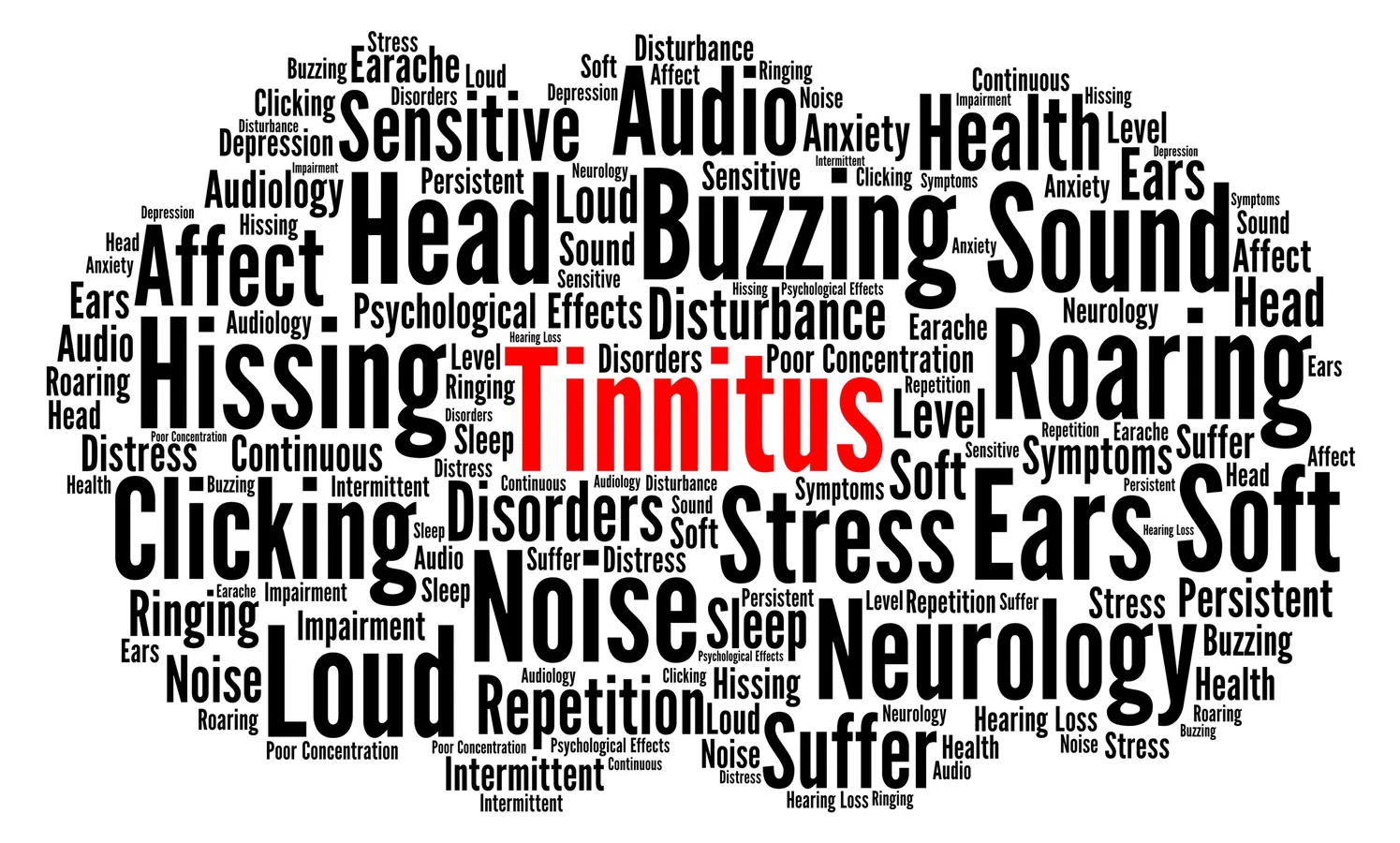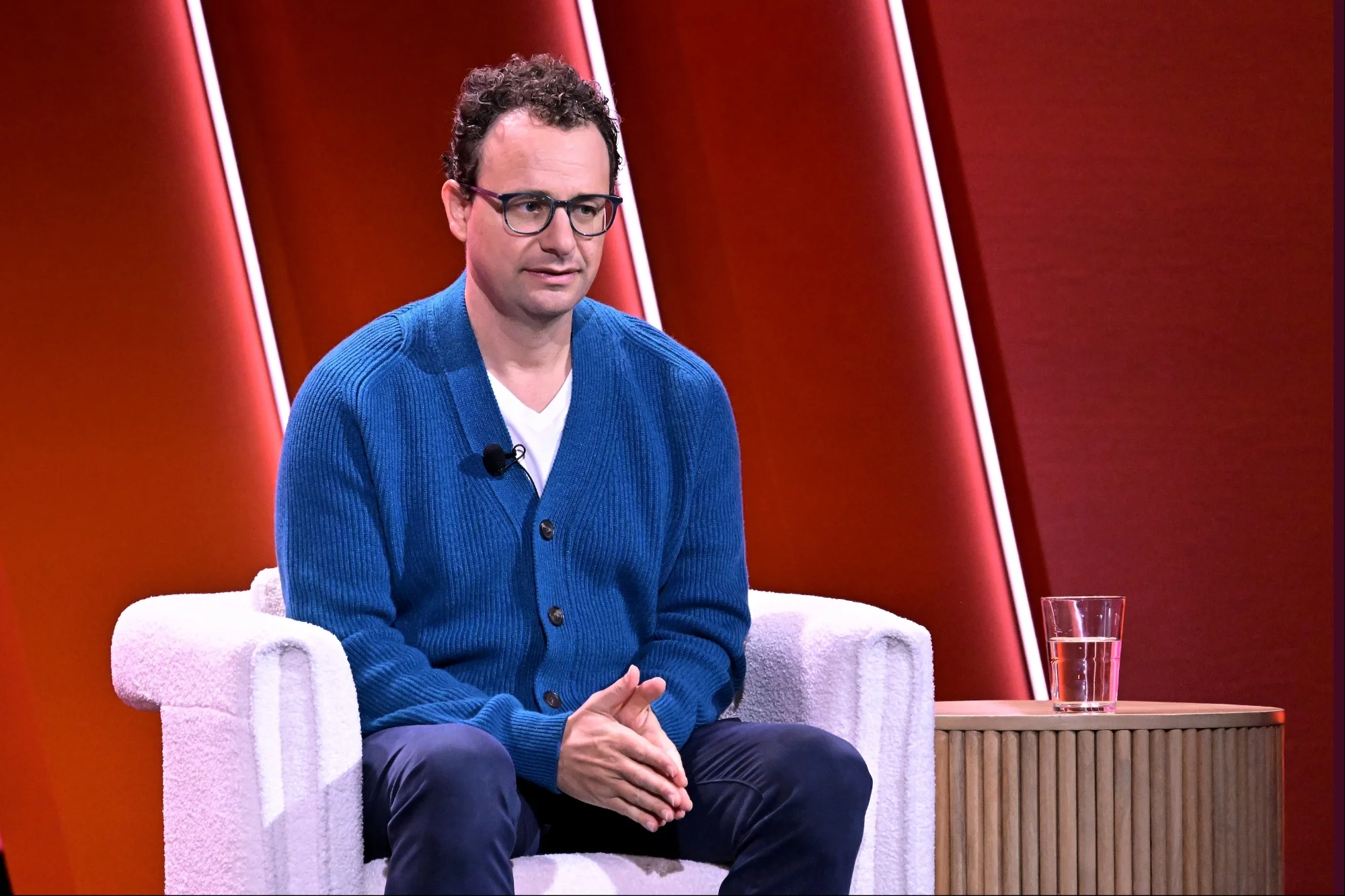By Bill Schiffmiller,Contributor
Copyright forbes

Tinnitus word cloud concept illustration
Most people know tinnitus as ringing in the ears. What sounds like a minor nuisance is, in reality, one of the most widespread but least addressed wellness issues of our time. Hundreds of millions of people live with it, often alongside stress, poor sleep, headaches, and declining performance at work. For businesses, tinnitus is not a fringe condition. It is an overlooked signal of how modern life undermines personal well-being and organizational productivity.
The Tinnitus Opportunity Lies in the Many, Not the Few
Traditional approaches to tinnitus have leaned heavily on clinical and medical management for the most severe cases. Severe tinnitus is devastating, but it represents only a fraction of the population. The bigger opportunity is with the many. Hundreds of millions experience tinnitus in milder but still life-altering forms, linked to stress, disrupted sleep, migraines, and daily fatigue.
This perspective builds on a piece I co-authored with Michael Piskosz, Ringing True: Why Audiology Can’t Crack Tinnitus. We argued that audiology has failed to claim leadership on tinnitus, leaving patients underserved and confused by fragmented solutions. Hearing aids have often been marketed as fixes, yet this overlooks the majority who do not view hearing loss as their primary concern. Our conclusion then, and still today, is that focusing only on the few with severe tinnitus blinds the industry to the much larger population with occasional or moderate tinnitus, where both wellness and business opportunities reside.
We often treat tinnitus as an isolated ear problem to be managed in clinical settings or with hearing aids. But this approach risks missing the bigger picture. If tinnitus is tied to stress, sleep disruption, headaches, and even cardiovascular health, then perhaps we have been starting at the wrong place. Addressing tinnitus as a whole means treating it not as a symptom to be masked, but as a signal of how sustainable modern life is.
Consumer Stories That Resonate Across Generations
Tinnitus does not follow a single storyline, which is why it reaches across generations and markets. The young gamer wearing headphones for hours, the parent juggling work and family while lying awake at night, the retiree managing hearing loss and other health concerns, each has a different experience of tinnitus, yet all feel the same disruption to daily life.
MORE FOR YOU
For young adults, tinnitus is often tied to lifestyle. Long gaming sessions, late-night streaming, concerts, or overstimulation from digital life can trigger or worsen the condition. It becomes part of a broader conversation about stress, anxiety, and the health trade-offs of always being plugged in.
For families in midlife, tinnitus often shows up alongside the stress of parenting, professional pressure, and fatigue. These individuals may not seek clinical help, but they know the impact of broken sleep or persistent headaches. Tinnitus becomes one more invisible burden that chips away at energy, focus, and patience.
For older adults, tinnitus frequently overlaps with hearing loss and other health declines. It is not only a quality-of-life issue but also a signal of vulnerability that affects independence, communication, and social engagement.
These stories cut across demographics but share a common thread: tinnitus makes life less sustainable. Whether through lost sleep, reduced focus, or mounting stress, the condition magnifies pressures already present in modern living. For businesses, that means tinnitus is not a niche medical challenge, it is a mainstream wellness issue shaping the performance and resilience of every generation in the workforce and marketplace.
The Sustainability of the Human Condition
These consumer stories feed into a larger truth: sustainability is usually discussed in environmental or economic terms, but there is also the sustainability of the human condition. This means the ability to live, work, and thrive without being worn down by constant stressors. Tinnitus highlights that fragile balance.
Stress and anxiety: More than 75 percent of people with tinnitus say stress makes symptoms worse.
Sleep: People with tinnitus are three times more likely to suffer from poor sleep.
Migraines and headaches: Over one-third of migraine sufferers also report tinnitus, underscoring its neurological overlap.
Heart rate variability (HRV): Apple data show HRV fluctuations can predict the intensity of tinnitus perception.
Each of these issues has consequences that extend into the workplace. Poor sleep, persistent headaches, and unmanaged stress reduce productivity, increase absenteeism, and raise wellness costs for employers. Tinnitus is not simply an auditory complaint. It is a business challenge hidden inside daily life.
Michael Piskosz, my colleague and co-author on tinnitus, frames it this way,
“Tinnitus is not just about the sound people hear, it is about the way that sound impacts their daily life and overall wellness. If we only view tinnitus through the lens of hearing loss, we miss its role as a broader wellness signal that can affect other aspects of our daily health. That is where the opportunity lies.”
What The Apple Studies Show Us
The need to reframe tinnitus is underscored by the ongoing Apple Hearing Study with the University of Michigan.
In May 2024, preliminary insights from nearly 160,000 participants showed that 77 percent had experienced tinnitus, 15 percent reported it daily, and more than a third of older adults said it was constant. The report described how people experience tinnitus, what they believe causes it, and how they manage it.
A year later, in July 2025, Apple analyzed Apple Watch data from over 72,000 people, showing that lower heart rate variability, a marker of stress, was consistently associated with more severe tinnitus. This was one of the first large-scale attempts to connect subjective experience with objective biometrics.
Together, these reports show progression: first mapping who has tinnitus and how they live with it, then exploring the physiological underpinnings that make it more than a passing annoyance. For business leaders, the lesson is clear. Tinnitus is widespread and measurable, and it signals a larger set of wellness challenges.
What People Are Doing Today
This raises the obvious question: what solutions exist now? The truth is, there is no silver bullet, only a patchwork of partial answers. Many people turn to sound therapy or masking, white noise machines, apps, or iOS Background Sounds, to make tinnitus less noticeable, especially in quiet settings. Cognitive Behavioral Therapy (CBT) and Tinnitus Retraining Therapy (TRT) provide coping strategies and retraining, though they require time and often professional support. Hearing aids with built-in masking tones help those who also have hearing loss.
The digital health space is crowded with apps that offer relaxation, soundscapes, and guided programs, but long-term engagement is limited. At the frontier are neuromodulation devices like Lenire, which attempt to rewire the brain’s response to tinnitus, though adoption is still early, and buy-in can be thousands of dollars. Comes with a high cost. And for many, management comes down to lifestyle, reducing stress, improving sleep hygiene, and protecting hearing from further noise exposure.
This fragmented landscape underscores the opportunity. No company has yet unified these approaches into a seamless, everyday wellness framework. Apple is closer than most, precisely because its devices already track sleep, HRV, noise, and stress, and now offer features like Background Sounds.
Apple’s Quiet Entry, Background Sounds
Apple has already taken its first step into tinnitus support, though it has not marketed it that way. The Background Sounds feature in iOS plays continuous ambient audio such as white noise, ocean, or rain. It helps mask the silence that can make tinnitus more intrusive.
For some users, this is a lifeline, a no-cost, always-available way to soften tinnitus without needing medical devices. It also ties naturally into Apple’s wellness ecosystem, complementing features like Sleep tracking, Noise monitoring, and HRV. Masking effectiveness varies, but embedding sound enrichment directly into iOS sends a clear message: tinnitus support can be democratized.
AirPods, The Everyday Tools for Auditory Wellness
While the Hearing Study relied on iPhone and Apple Watch for data, AirPods are where most consumers actually live with sound. They consistently rank among Amazon’s best sellers in headphones and earbuds, underscoring their ubiquity.
The AirPods Pro 2 and growing attention on AirPods Pro 3 showcase Active Noise Cancellation, Adaptive Transparency, and Loud Sound Reduction. These capabilities let users reduce harmful exposure and enable Background Sounds, giving them an accessible way to soften tinnitus or manage noisy environments.
In my recent Forbes article on Apple’s ‘Heartstrings’ video, I noted how it surpassed one billion views. That scale of engagement does more than reflect Apple’s ability to reach an audience. It reveals the depth of consumer curiosity and concern about hearing health. AirPods are not simply earbuds, they are the entry point for millions of people beginning to think differently about sound, noise, and tinnitus.
The Path Forward
The path forward is clear. Tinnitus should be recast not just as ringing in the ears, but as a marker of wellness. iOS can be positioned as the tool that helps consumers monitor, manage, and improve their daily lives. Apple has already laid the groundwork with Background Sounds, and AirPods extend this into everyday environments. The larger opportunity is to leverage Apple’s ecosystem of iPhone, Apple Watch, and AirPods to make tinnitus support accessible, relatable, and scalable.
This story is not only relevant to the technology sector. For companies of every size, tinnitus signals broader pressures that undermine performance. What begins as a wellness concern quickly becomes a workplace challenge. Employees struggling with poor sleep, headaches, or stress are less productive and more likely to disengage. Strategy leaders can see how a condition once framed as niche now represents a mass-market opportunity. And those building new lines of business can recognize how auditory wellness is emerging as a differentiator in competitive markets.
A Business Case Rooted in Humanity
Tinnitus, often described as ringing in the ears, is more than a medical condition. It is a mirror of how modern life strains the sustainability of the human condition. Stress, poor sleep, headaches, and cardiovascular markers all intersect with tinnitus in ways that diminish quality of life. By reframing tinnitus as wellness, companies have the chance to lead millions toward healthier living while expanding their role as trusted platforms for daily health.
The signal is already clear. Consumers are curious, as seen in billions of AirPod purchases and the billion-plus views of the Apple Heartstrings video. They are concerned about their hearing health, and they are searching for solutions they can trust. The companies that move now, reframing tinnitus as part of everyday wellness, will be the ones that earn loyalty, capture new markets, and lead the future of health.
Call it tomato, call it tomato, the demand for hearing health is here, and tinnitus is one of its biggest opportunities.
Editorial StandardsReprints & Permissions



